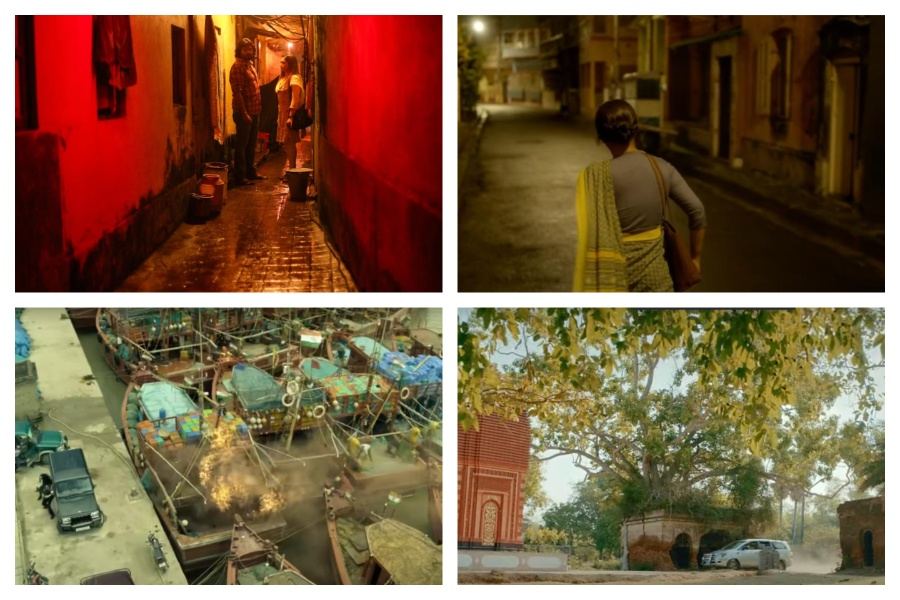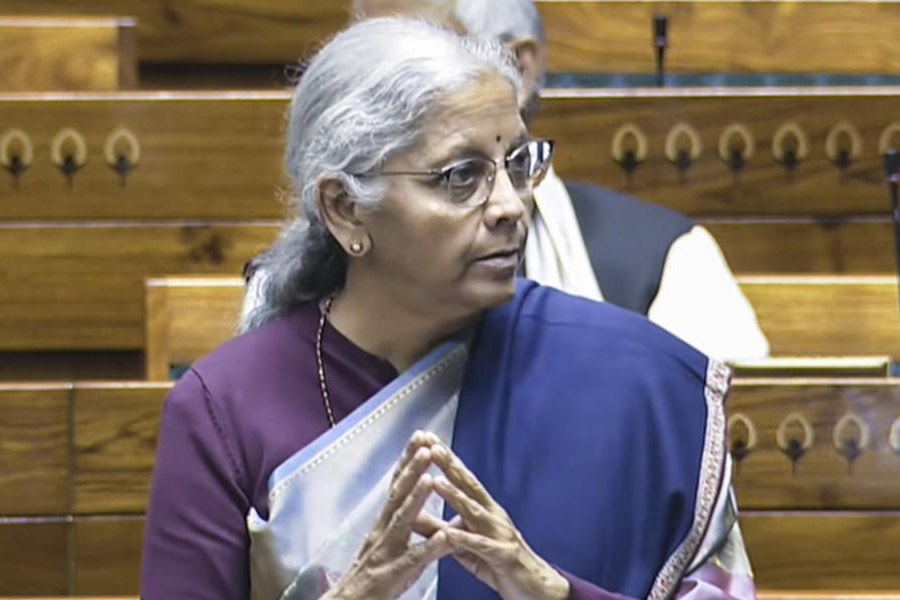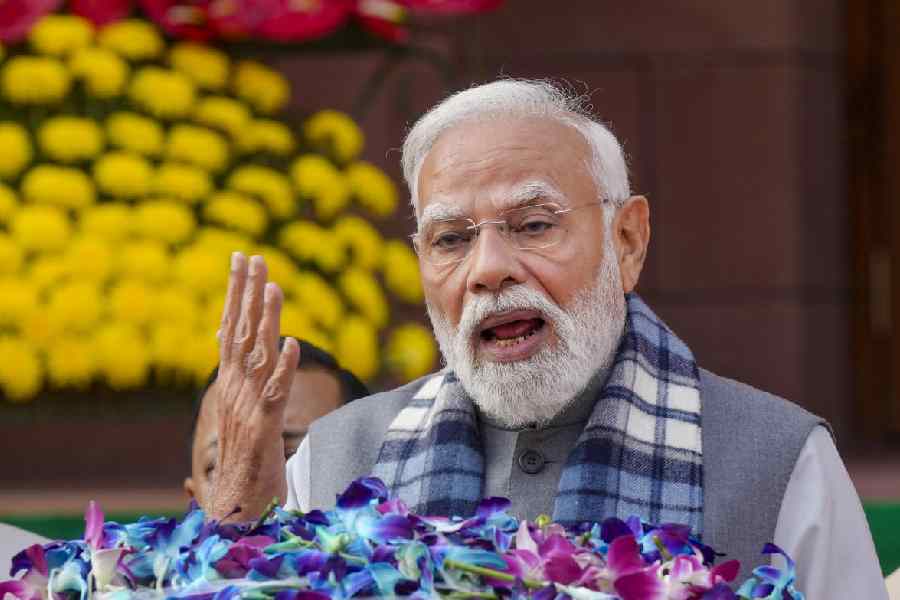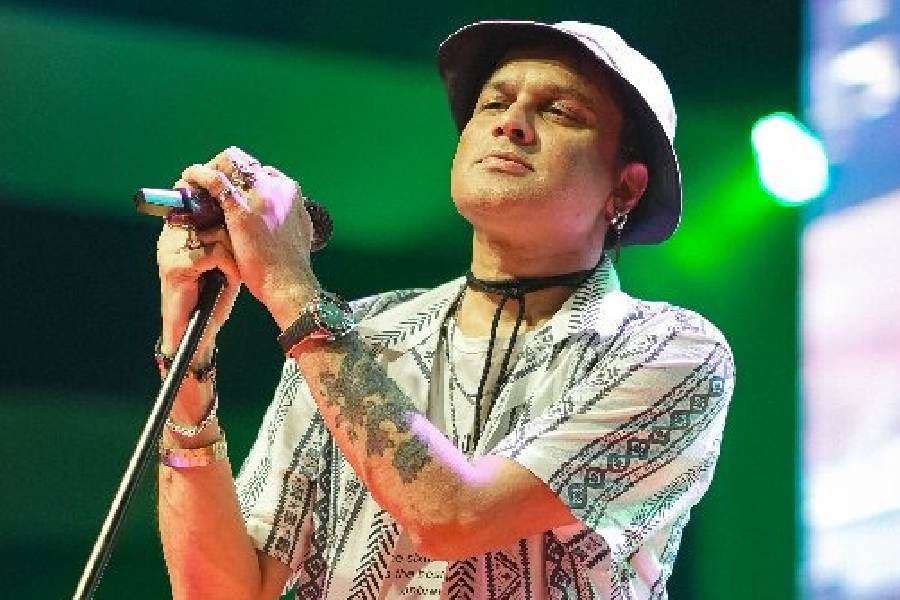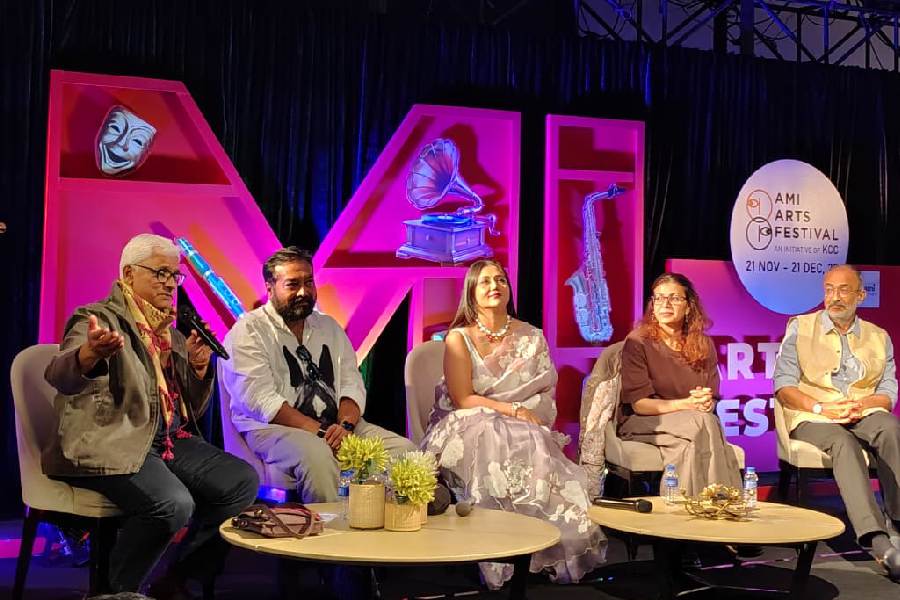Earlier this year, the web series Khakee: The Bengal Chapter was released. It is about the underbelly of Calcutta and its makers went to lengths to choose locations that would enforce the gritty theme.
Says director Goutam Ghose, “When Manikda, Mrinal Sen and Tarun Majumdar were working, Calcutta was represented differently. There was a saheb para — Chowringhee, Alipore, Esplanade. North Calcutta depicted the life of the middle class, while south Calcutta belonged to the new middle class.” He continues, “With new and improved technology and powerful digital cameras, it is gradually becoming possible to unveil other layers of Calcutta.”
The Bengal Chapter was shot in secluded or “dead zones”, says Debatma Mandal, who has directed the series alongside Tushar Kanti Ray. The part that has to do with illegal skeleton trade has been shot in the Baranagar Jute Mill. Some others have been shot in the wilderness close to Prinsep Ghat, the back alleys of Shyambazar, the streets and lanes in and around College Street, Sealdah Railway Station and even Katapukur morgue.
And it is not always about landmarks, but spaces that are an extension of the city’s DNA. So you have a shot of some young men playing football in the rain. In the same field, Sagor — who is one of the main characters — murders a member of the rival gang. From one end of the screen peeps a brick wall with political graffiti. Like football, it too is so Calcutta.
In the last five to seven years, Bengal’s production houses have churned out thrillers set in the city by the kilo — Ayan Chakraborti’s Nikhoj, Parambrata Chatterjee’s Nikosh Chhaya, Sourav Chakraborty’s Rajneeti, Pratim D. Gupta’s Chaalchitro: The Frame Fatale, Nandita Roy and Shiboprasad Mukherjee’s Raktabeej.
With each of these has come the unveiling of the other Calcutta on camera. Mandal says, “When we are making a thriller, our motive is to unsettle the crowd. And we can do this best if we can make the audience see the locality as one of their own.”
Says director Arindam Sil, “The location of The Bengal Chapter reminds me of Ebar Shabor. I shot it in the same house in Shyambazar. Calcutta has many layers. While shooting a thriller, it is possible to explore those layers.” Shabor is the name of the detective series created by novelist Shirshendu Mukhopadhyay. Sil has made at least half a dozen Shabor films; the last Tirandaj Shabor was released in 2022.
Sil continues, “Turn the lens, and a known location will look different. I have focussed the lens on the shady parts of the Sealdah Station instead of its more familiar facade.” Actor-director Joydeep Mukherjee shot a few scenes of Missing Link in an abandoned jute mill in Panihati. The 2024 web series is about a murder investigation. Gupta’s film Chaalchitro begins with a young woman getting off the bus and walking down a lane. The film has to do with her murder. Gupta shot in the dark areas of Ishwar Chowdhury Lane in Lake Gardens. He shot in Deshapriya Park just ahead of Durga Puja with pandal construction happening in the background and he shot a murder scene in a desolate lane in Hazra. For his web series Tooth Pari, a love story of a vampire and a shy dentist, he shot in the Nonapukur Tram Depot.
“When it comes to thrillers, there is a lot of opportunity to explore locations people have not seen before. Park Street has figured in earlier films, but not the lanes and bylanes of Rafi Ahmed Kidwai Road or Middleton Row,” says Gupta.
But not everything is chosen for its eerie vibe. When Mukherjee and Roy shot Raktabeej, they needed a locale that would fill in for a mofussil area. The film is based on an incident that took place in Burdwan, but the film was shot at Panchla railway station, which is in Howrah, a few kilometres away from Calcutta.
Mukherjee tells The Telegraph, “Nalban 1 and 2 have also become favourable shooting zones for Calcutta directors. I have used Nalban 1 to represent North Bengal in Talmar Romeo and Juliet. And in Adwitiya, it stands in for the Sunderbans.” Nalban 1 and 2 are two large lakes and picnic spots in the eastern extremities of the city. In Ray and Ghatak’s time, they didn’t exist as they do now; they were most likely two of many fisheries in that area.
Talmar Romeo and Juliet is a crime series that revolves around lovers from rival families. Talma is a fictional town in Jalpaiguri district. Adwitiya is about a medical dropout who joins a rural bank.
“Often shooting in a real location is cheaper than creating sets,” says Mukherjee.
Sreejan Mukherjee, who is a production designer, says, “While directors are searching for natural locations on the periphery of the city — empty playing grounds, ancient banyans, temples — promoters who have a keen sense of trends are trying to create locations in Calcutta.” He continues, “They are refurbishing baganbaris in Narendrapur, Sonarpur, Baruipur and Shasan in South 24-Parganas.” In Nikhoj, the seminal murder scene has been shot in one such country house.
Talking of uncommon locations in the city, Sil repeats what ace photographer Raghu Rai once told him. “There is drama all around Calcutta. You only have to train your camera right.”

